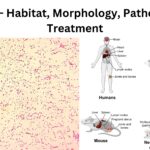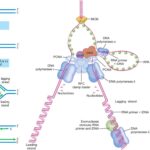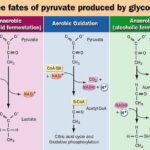How do neutral solutes move across the plasma membrane? Can the polar molecules also move across it in the same way? If not, then how are these transported across the membrane?
How do neutral solutes move across the plasma membrane? Can the polar molecules also move across it in the same way? If not, then how are these transported across the membrane?
Please login to submit an answer.
Neutral solutes such as O₂, CO₂ and steroid hormones move across the plasma membrane by simple diffusion
Small, nonpolar molecules dissolve in the hydrophobic lipid bilayer and cross down their concentration gradients without assistance
No metabolic energy is required and transport rate obeys Fick’s law, depending on concentration difference, membrane thickness, surface area and the solute’s lipid-water partition coefficient
Polar molecules and ions cannot diffuse appreciably through the hydrophobic core of the lipid bilayer
The energetic barrier is too high for charged or highly electronegative species to partition into the membrane
Polar solutes are transported by membrane proteins in one of three ways
Facilitated diffusion
Transport proteins (channel proteins and carrier proteins) provide specific pathways for down-gradient movement
Channel proteins form aqueous pores for rapid ion or water flux; carrier proteins bind substrates (e.g. glucose, amino acids) and undergo conformational change to shuttle them across
Active transport
Primary active transport uses ATP-driven pumps (e.g. Na⁺/K⁺-ATPase) to move solutes against their electrochemical gradients
Secondary active transport couples the downhill movement of one solute to the uphill transport of another via symporters or antiporters
Vesicular transport
Large molecules (e.g. proteins, polysaccharides) and bulk fluid are internalized or expelled by endocytosis and exocytosis, respectively
Summary of transport modes
Simple diffusion for small, nonpolar solutes without proteins or energy
Facilitated diffusion for polar solutes down gradients via specific proteins
Active transport for uphill movement requiring energy
Vesicular pathways for macromolecules and bulk transport
- Share on Facebook
- Share on Twitter
- Share on LinkedIn
Helpful: 0%




